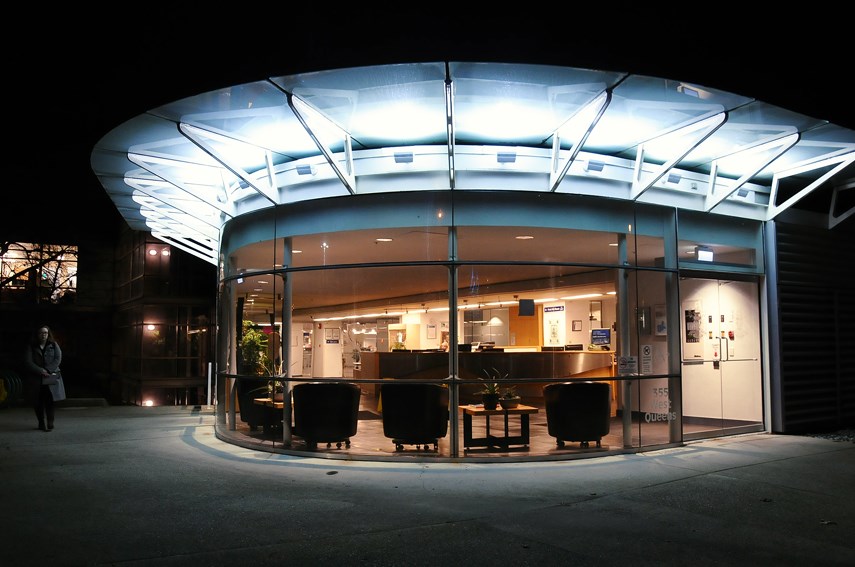They don’t want $1.5-million townhouses, chronic construction, or a below-market rental project that’s bigger and denser than the community is comfortable with.
So what type of affordable housing does the District of North Vancouver council want – how can they get it – and where will they put it?
Those questions dominated a recent two-hour council workshop in which Coun. Lisa Muri called for a partnership with Habitat for Humanity.
“Come hell or high water, there is going to be a Habitat for Humanity project in this municipality before the end of this term,” Muri vowed.
Three families could be accommodated in a house, basement suite and coach house on one district-owned lot, Muri said.
Besides easing the backlog at Lions Manor, leasing property to Habitat for Humanity would offer residents an opportunity to eventually move from social to market housing – but not necessarily market housing in the district.
“Are they able to stay here? Well, maybe if the market crashes,” she said. “But they get to step up.”
In 1976, young Canadians saved for an average of five years for a down payment on a house. Currently, the average in Vancouver is approximately 23 years, according to a staff report.
“The vision of what worked 20 years ago for families . . . isn’t what works today,” Coun. Mathew Bond said.
Besides affordability, housing availability is critical, Bond said, noting the lion’s share of district homes are single-family homes with a median price of $1.6 million.
A lack of options has created “a strange game of musical chairs” in which only the wealthiest can live in the community, Bond said, calling for purpose-built rentals amid a greater variety of housing.
“The luxury rental apartments of today are going to be the old, affordable rental apartments of tomorrow,” he said.
There are district-owned lots scattered throughout the municipality, Coun. Jim Hanson noted. But if those units could be sold to consolidate a bigger land parcel near a transit hub, the district could create housing for homeless people or for workers who don’t live on the North Shore, he said.
“I totally favour the use of district lands because it’s an asset that we do have,” Hanson said.
“I’m going to be phoning you after this meeting,” Muri told Hanson. “I will never support selling land in order to buy more land. That doesn’t make sense to me.”
Using district-owned land – not selling it – “is the cheapest way for us to provide affordable housing,” Coun. Betty Forbes said.
Forbes cautioned against making a deal with developers in which the district forgives extra height and density in exchange for below market units. Using community amenity contributions puts the financial burden on taxpayers, Forbes said, making the deal: “virtually a transfer of wealth.”
With approximately $500,000 in the bank, the district’s affordable housing reserve fund is “challengingly low,” noted Habitat for Humanity director Stephani Baker.
“I would really recommend that you use some of your (community amenity contributions) to go into that fund,” Baker said.
Council should look at the breadth of needs across the community, according to Armin Amrolia, an associate vice president with B.C. Housing.
The province is slated to spend $1.9 billion to build 14,350 affordable rental homes across B.C. in the next decade.
But where all those people will park was a concern for Muri.
Each extra parking stall can boost the cost of a project and threaten affordability, Amrolia said, noting their mandate is to stretch government dollars as far as possible.
“We have huge challenges in the district with parking; massive and they’re just growing,” Muri said.
Every conversation about density needs to be paired with a discussion about transportation, according to Coun. Megan Curren, who floated the idea of supplying affordable housing projects with a car share.
Workforce housing should be a primary focus, according to Coun. Jordan Back.
Besides housing the workforce, the district needs to help homeless people, seniors, people with disabilities, and others whom “the market failed,” Hanson said.
“I am in totally in favour of this government, and any other government, intervening in the marketplace to (help) these disadvantaged groups,” Hanson said.
The district should be focused on creating social housing for people with disabilities and caregivers, Mayor Mike Little agreed, offering a distinction between social housing and affordable housing – which is generally tethered to an area’s median income.
“I’m actually not that focused on affordable housing but I really think that we have a very great need in our community for more social housing,” the mayor said.
District staff are set to report back to council on policy options.



